Dive or Die
Can the slow death of Denver’s dive bars be stopped?
The diminutive stature of the guy sitting next to me at the bar of the Cheerio Lounge on South Federal Boulevard made him appear like a kid at a malt shop counter. The lip of the pint glass came almost to the middle of his face, so his movements were economical as he lifted pour after pour of Bud Light to his mouth.
I had chosen the stool next to him because it was the last one available. As I sat down, he introduced himself with enough of a slur to make it clear he’d arrived long before happy hour. Along with his name, he told me that he’d just been released from state prison after 10 years (an odd fact to share with a stranger), so I offered my sympathy over what I imagined would be a difficult transition back to the real world. He also struck up a conversation with the two women on his other side, but the bartender rebuked them after they started making bawdy jokes at the small man’s expense.
Like many others at the bar, I left when happy hour ended, my curiosity over the Cheerio—one of the only bars within walking distance of my house—satisfied after a few cheap drinks. That was a few years ago, when I was newer to the neighborhood. The place has since shuttered (in 2019, just before the pandemic began), but the vacancy in the neighborhood scene was soon filled by Landero’s, which has since attracted a following of regulars who come in for Spanish-language sports and karaoke. The Cheerio didn’t have anything special going on, other than low prices and the prospect of maybe running into a neighbor. Its final Yelp review bestowed a surprising four stars and summed it up appropriately: “Kind of a dive. But it was OK.”
Every great dive bar becomes so as much for the customers who haunt them as for the folks behind the bar.
Neighborhood dive bars like the Cheerio come and go all over metro Denver without much notice, but the city is also home to iconic watering holes with timeless character, patinas of grit and age, and colorful clientele. Every great dive bar becomes so as much for the customers who haunt them as for the folks behind the bar. A gruff bartender may take a shine to you and regale you with the history of the ownership if he gets the sense you really care; a gregarious waitress will give you her version of why the bar she’s worked at for 35 years only serves green chile on the weekends. The old guy at the end of the counter who rattles the ice pellets in his empty lowball glass to get your attention might help you memorize the names of everyone on the staff (along with what pisses them off), so you’ll feel more at home the next time you walk in the door.
Great dive bars can be found downtown, in Denver’s gentrifying neighborhoods, out in the suburbs, and in industrial areas where workers long ago piled out of factories and warehouses for post-shift drinks. And they’re all in danger, thanks to the soaring price of real estate, changing drinking habits, and harsh, COVID-driven reevaluation of our priorities.
The distress signal is clear from the dwindling number of bars alone. If you happen to own a copy of Drew Bixby’s slim but indispensable Denver’s Best Dive Bars: Drinking & Diving in the Mile High City (Ig Publishing, 2009), a quick tally reveals that more than half of the 95 bars listed in the guidebook have closed. Bixby, now Department of English faculty at CU Denver and assistant director of its writing center, has run the numbers in a little more detail. “Thirty percent of the bars still exist, more or less the same; 15 percent have either changed hands and ethos to some degree, or changed names with the same ethos; and 55 percent are just gone,” he explains.
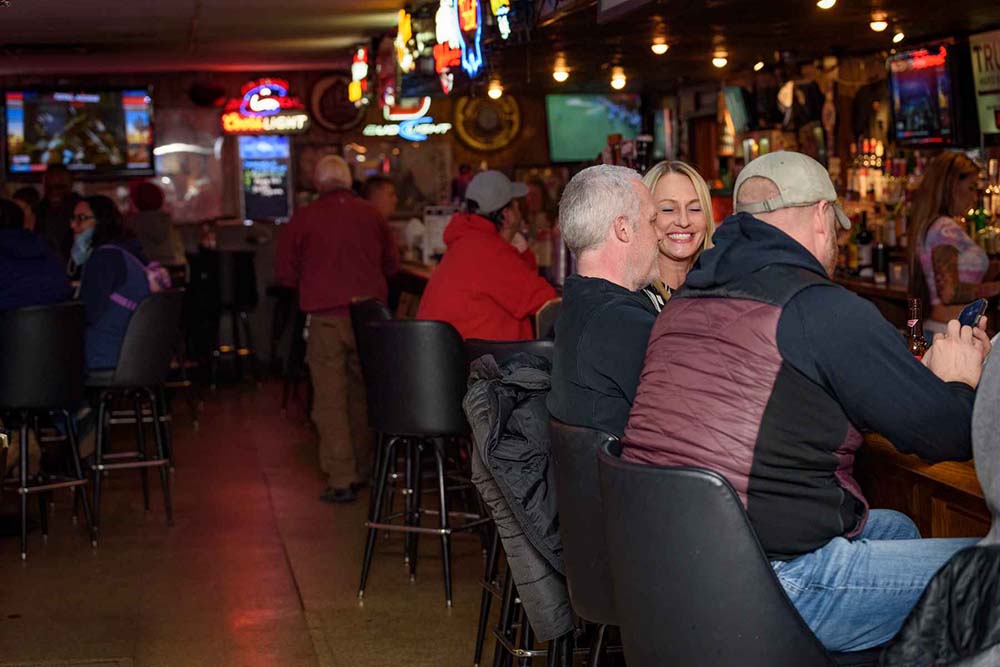
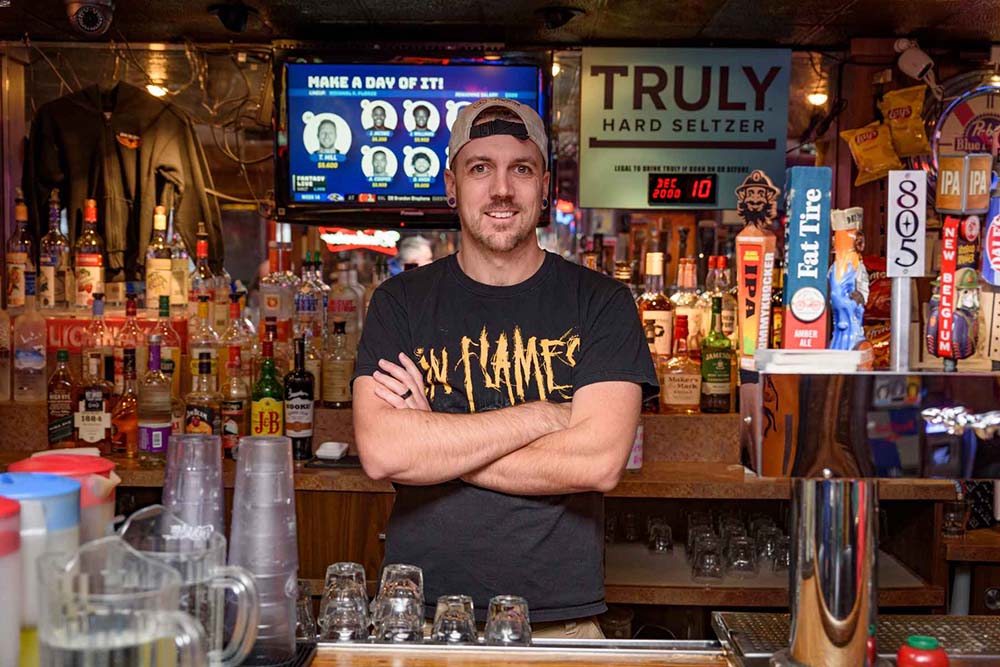
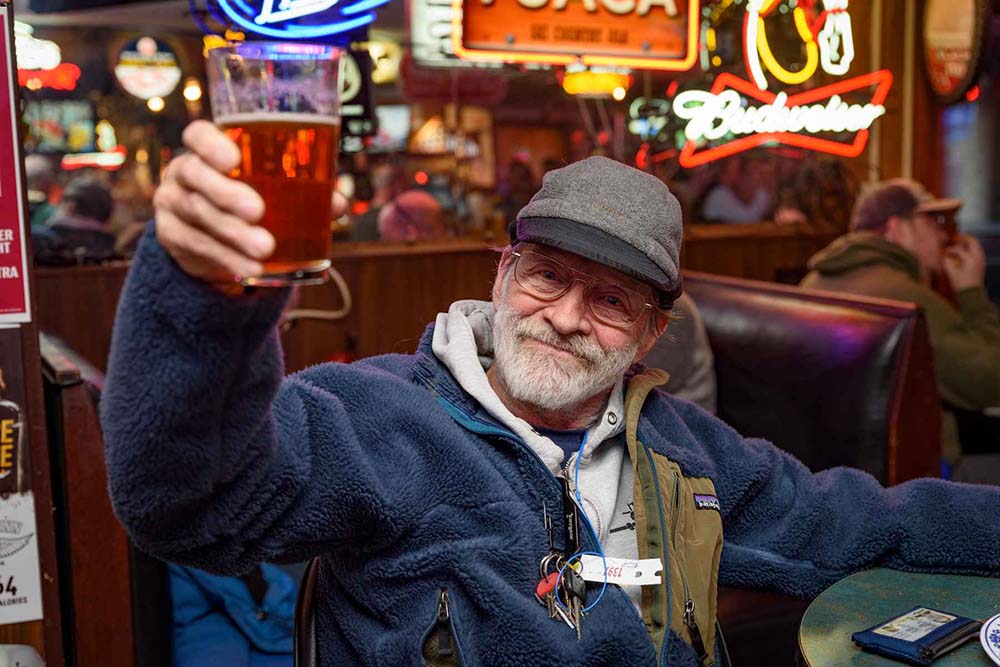
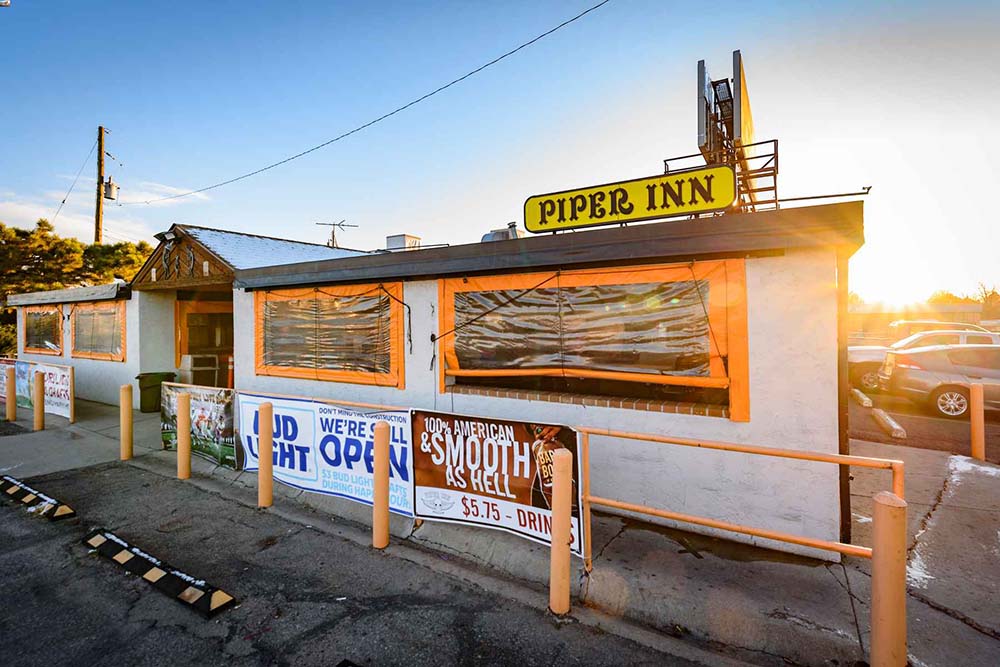
PHOTO CREDITS: Dave Ingraham.
It’s no wonder that bar owners like Jed Levin, third-generation proprietor of the Piper Inn (2251 South Parker Road), are taking stock, looking to see what’s behind the death of neighborhood joints, and coming up with a plan to beat the odds. One of Levin’s primary goals is attracting customers with good food, since guests tend to drink less now than when his grandfather—who founded the Piper Inn in 1968—and his father ran things. “I’ve always described us as a dive bar,” Levin states, “but we’re definitely more of a restaurant than some of our dive bar compatriots.”
Levin adds that the bar was already famous for its chicken wings when his father took over from his grandfather in 1981 and hired a Chinese family who had recently immigrated to Colorado to run the kitchen. (The family has since retired, but some of their recipes live on.) The result was one of the most intriguing menus in town: burgers, Buffalo hot wings, stir-fried Chinese dishes, and out-of-this-world Chinese wings that were not only new to the Piper Inn but that also predated the trend of Asian-influenced bar food by a good 20 years. “I don’t think you’ll find an earlier example of chicken wings being served anywhere in Denver,” Levin boasts of his grandfather’s early entry into the wing game.
“We used to be much more alcohol heavy than we are now—and that’s A-OK with me,” Levin continues. “The net for me is mainly that since our alcohol sales are down, we’re putting more effort into the quality of the food.” But, he says, national chains are squeezing out the cheap, casual, table-service restaurant. “When it comes to staying competitive with these chains, I’m basically dead in the water. All I can do is outcompete them in terms of an experience and offering a community of people to come into. We’re a community built on everyday people from all walks of life.”
“We’re a community built on everyday people from all walks of life.”
Jed Levin, The Piper Inn
When customers can’t simply walk a block or two to their neighborhood saloon, drawing commuter customers can be tricky, and that’s one of the major hurdles the Piper Inn faces. The bar had been a destination for bikers from all over the Front Range for decades, and a neighborhood favorite for nearby residents who have either moved away or gotten older and no longer go out as much. Levin points to other bars nearby, such as the Night Shift Saloon and Milo’s, that didn’t make it. “We offer top-tier food and a top-tier experience, and that’s working for us,” he says. “I support all my friends and enemies in this business, and I hope customers can find a great place locally. They don’t need to be helping some Texas billionaire buy a third yacht.”
In central Denver and its pedestrian-friendly neighborhoods, there are other threats. “It has to do with who has the lease and who owns the land,” Bixby explains. “I think it’s economic forces more than a change in people and their habits. Whole swaths of this town are unrecognizable. What you’ll find is that the neighborhoods where the most bars have closed are those with the most growth or gentrification.”
You won’t even find remnants of Shelby’s Bar & Grill downtown; the building was sold out from under the owners in 2019 and demolished. (In 2016, Esquire dubbed Shelby’s one of the 18 best bars in America.) And many other old favorites, from El Chapultepec (which was also crowned by Esquire in 2007) to the Wazee Supper Club to the Rustic Tavern, have—or will soon—become trendy new eateries and clubs.
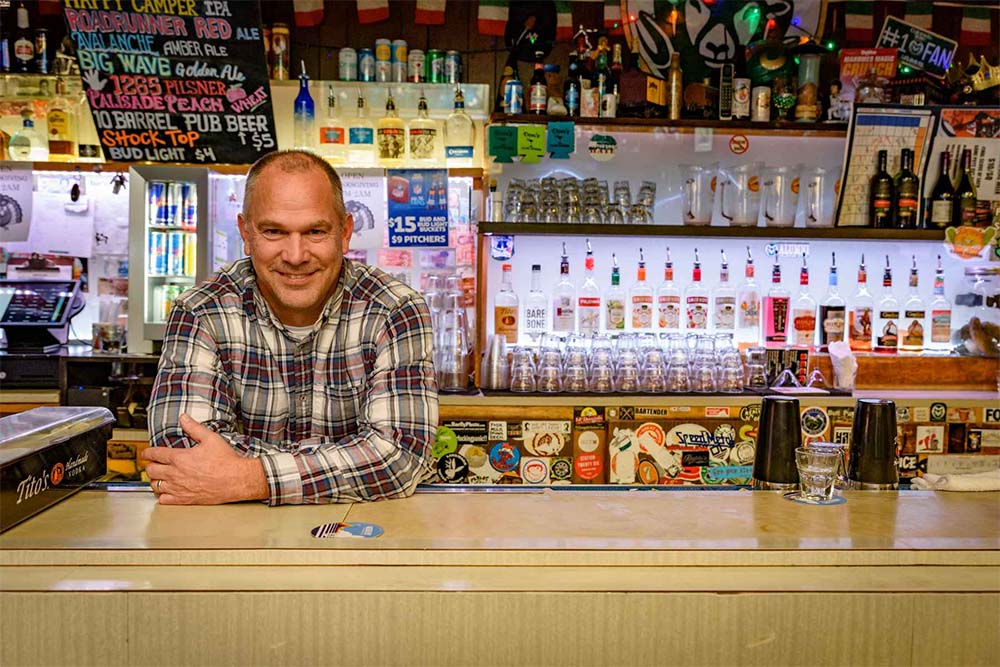
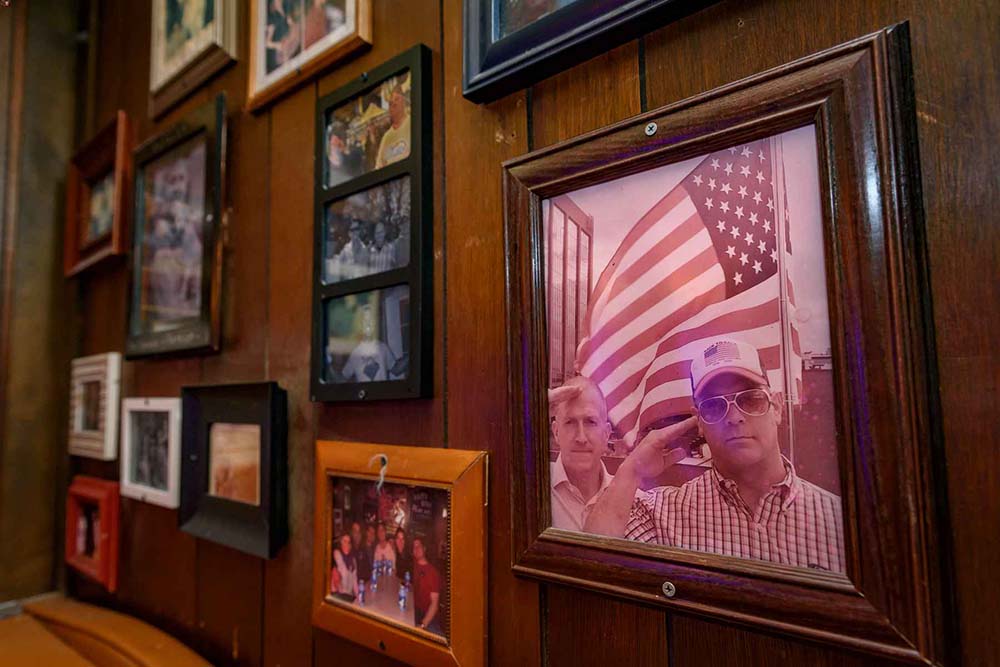
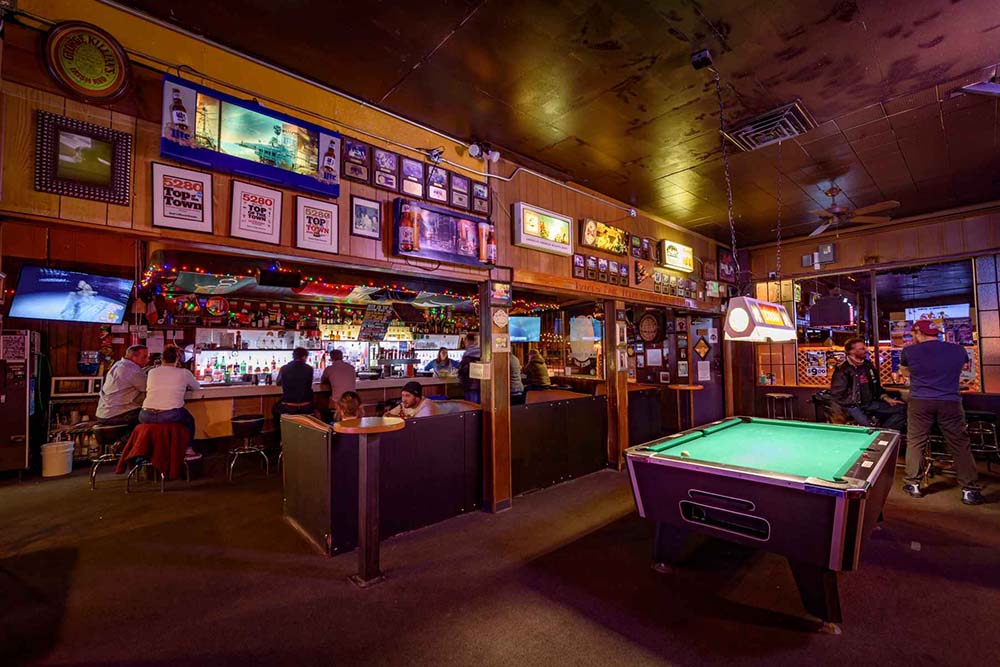
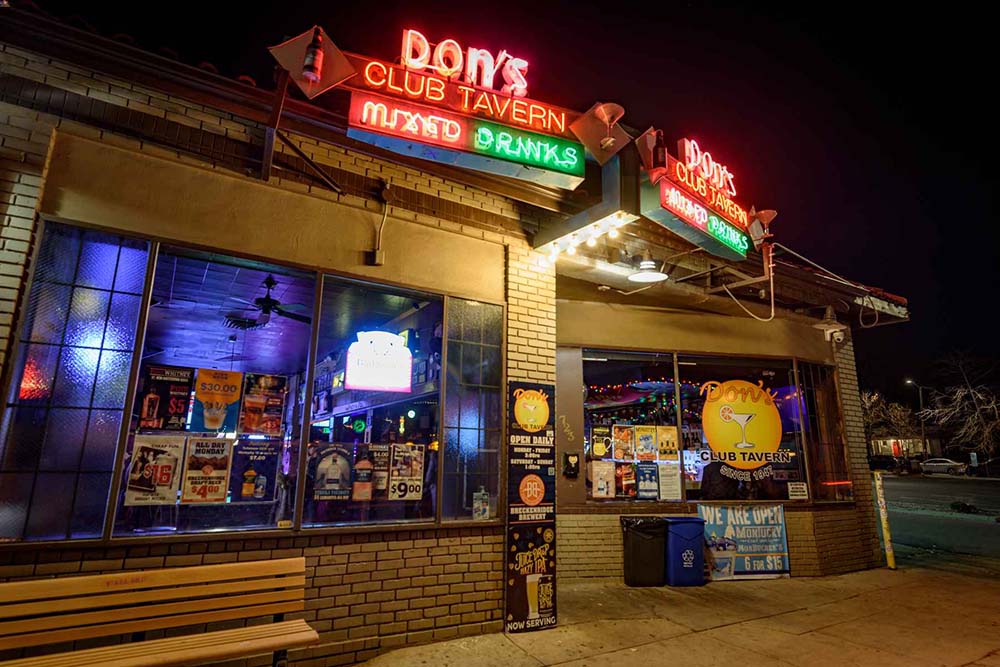
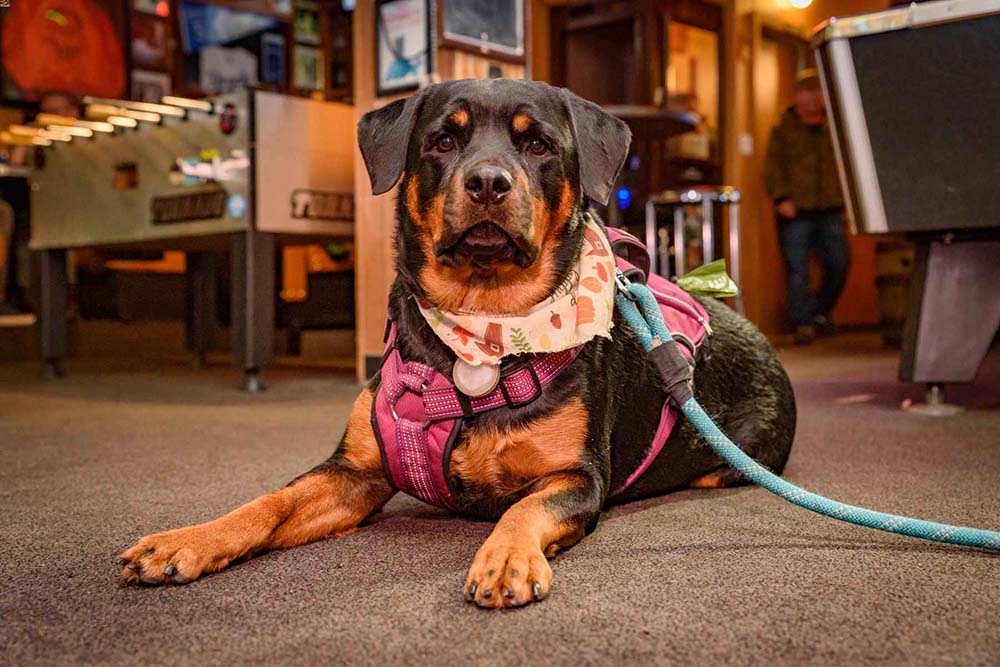
PHOTO CREDITS: Dave Ingraham.
Some holdouts have received a breath of life in the form of new ownership or a new generation of leadership. In 2005, Mark Berzins, founder of the Little Pub Company, purchased Don’s Club Tavern (known to many as Don’s Mixed Drinks because of the neon sign above the door) at 723 East Sixth Avenue. He purchased it from the family of founder Don Aymami, who opened the bar in 1947 and died in 2004.
Berzins gave the place a minor facelift and added more draft beers. Coupled with an expansion a few years later, Don’s is a little less gritty than its old self, but its character remains. Barflies from before the changeover still flock there, Berzins attests, even if the nighttime crowd now skews younger.
Berzins says COVID and cannabis have been a bigger threat to business than customers’ drinking habits, even if he’s noticed peak hours shift from after 10 p.m. to closer to the dinner hour. “When industry people are used to going out after work, that’s a huge part of our business,” he points out. “But people were broken of that habit during the pandemic; people are going out earlier now. Lots of people pivoted to cannabis, too, and with the quality of cannabis products getting better and better, you see it in our guest check average—you see this leakage.”
Craft breweries, Berzins adds, are also becoming the new neighborhood watering holes, but rules around obtaining a liquor license are different for breweries and bars. Even with a new Colorado law that allows bars to sell drinks to go, competing with a brewery that makes its own product and sells cans, bottles, and crowlers out the door or on liquor store and grocery store shelves is tough. He thinks many of the laws regulating bars are outdated and need to be reviewed to keep bars competitive with other kinds of drinking establishments.
But overall, he says prospects are good for his booze-only joints, which include Don’s as well as the newly acquired Stadium Inn near the University of Denver. “I think that bars are pretty timeless,” he says. “For good bars, it’s just a matter of changing up your offerings. I’m still very bullish—there’ll always be a spot for Don’s.”
Alex Barakos is only in his mid-20s, but he already comes across as an old pro in the bar business. It’s in his blood. Barakos is the grandson of the late Pete Contos, who opened Pete’s Satire Lounge at 1920 East Colfax Avenue in 1962 with his wife, Elizabeth. After earning a degree in hotel and restaurant management from Northern Arizona University, Barakos returned to Colorado in 2020 to help his family run the Satire as well as Pete’s Kitchen, Pete’s Central One, and Pete’s University Park Cafe. Most of the last two years have has been devoted to getting the businesses through the pandemic, but recently Barakos has turned his attention to helping the Satire thrive. While the kitchen is currently closed for a remodel, the bar is still pouring, and Barakos hopes to fully reopen in February with a tighter food menu of classic Den-Mex eats and a new room devoted to bar games. “My goal is to embrace the dive bar and let it be everything it should be,” Barakos says. “Nothing too fancy; just old-school in just the right ways. The key is to update things without making it fancier.”
Barakos points out that young people are the key to maintaining the vibrant scene on Colfax, and he sees them returning to what he calls “the trifecta of Colfax:” the Satire Lounge, the Lion’s Lair, and the Squire Lounge. “Tons of young people are moving into our area and they’re embracing us. They want to hear about the history.” But Barakos also knows that having history isn’t enough to guarantee success. You still have to offer something that people want, and often that’s just an inexpensive outing without a pricey car ride, $15 cocktails, or trendy food. “People need to be supportive,” he says. “Go have yourself a cheap night on Colfax.”
To many newcomers to Denver (and more than a few lifelong residents), the aging neon signs, the dingy bathrooms, and the warped, creaky floors are the definition of a dive bar. But dive bars are so much more than dimly lit corner booths and a night of hard drinking. “A place can have a soul,” Bixby states, but it takes time. “Because of what it has lived with and who has lived in it, you cannot speed up the characteristics of a place becoming a dive bar. Is there still a place for these bars? Are they important? Yes. Every time one of these bars closes, it’s a loss of a part of Denver.”
“Is there still a place for these bars? Are they important? Yes. Every time one of these bars closes, it’s a loss of a part of Denver.”
Drew Bixby
You don’t have to become a barfly to support Denver’s dives. But if you had a regular neighborhood pit stop and you’ve fallen out of the habit of dropping in, consider a visit instead of picking up a six-pack or some gummies on your way home from work—whether that’s at the five-o’clock whistle or the end of a restaurant shift. The alternative? If you wait too long, you might just find a vacant lot or a brand-new high-rise in place of your old haunt—and nobody’s raising a glass to that.
Ad:


